Geologist Fuels Consulting Biz by Drilling Deeper Into FileMaker Web Technology
FileMaker® Pro / WebDirect: FileMaker Web Subscription Service Keeps Oil Field and Reservoir Data Flowing to Prospectors 24/7
Just because your business involves fossil fuels, the technology you rely on doesn’t need to be a fossil too. A new FileMaker web solution brings new technology to finding an old resource.
In the United States, the average person consumes about 2.5 gallons of crude oil per day — or 22 barrels per year. Offshore oil production helps meet this need. According to the U.S. Energy Information Administration, in the past decade, offshore oil production has accounted for about 30 percent of total global oil production.
Petroleum powers our lives. We rely on it all day long. Every day — and not just to gas up our cars. Plastic water bottles, bike tires, heat, ink, crayons, bandages, toilet seats, tape, roofing tar, and even propane for the backyard barbecue. All possible, thanks to petroleum.
We utilize the fossil fuel endlessly, topping off our tanks and speeding away from the pump without ever stopping to think about the process that brought the gas into our lives.
Dr. Steve Cossey thinks about it all the time.
As a geologist and founder of Cossey & Associates Geoconsulting (based in Durango, Colorado), Cossey is in the business of helping oil companies locate underwater reservoirs of the slick, black stuff we love so much. So what is Cossey’s fantastical tool for oil exploration? The humble database.
For 20 years, prospectors have used Cossey’s comprehensive FileMaker Pro database of oil field and reservoir geology to plan deepwater explorations. The database has been available through DVD subscription. Periodically, Cossey updates the database and mails out new DVDs to subscribers.
Since the early 2000s, eXcelisys has helped Cossey with the design and maintenance of his database. Last fall, Cossey decided to take the plunge and revamp his system by adding web functionality to make the database available as an online subscription service. Several factors played into the decision, primarily a drop-off in DVD subscribers following a downturn in the oil industry. To help fuel subscriptions, Cossey decided to place the database on the Internet so it would be available to anyone willing to buy a block of time to access the information.
“I thought, ‘What am I going to do to utilize this database and find some other way of getting it out there to people to use in a different mode?’ ” The conversion went live a few weeks ago, making the Cossey Turbidite Field and Reservoir Database available online and putting Cossey’s DVD-burning days behind him. “It’s very slick, very fast,” said Cossey. “I think we’ve covered all the bases.”
Drilling into the Data Made Easy
What, exactly, is on the Cossey database and how do geoscientists and engineers from oil companies utilize the information?
Deepwater reservoirs are expensive to drill, so oil companies need to vet their prospects carefully. This is problematic, says Cossey, because “the deepwater environment is such a lightly known area of the world.” Oceans cover 70 percent of the earth’s surface with 95 percent of the ocean floor remaining unmapped.
Given the unknowns, how do oil companies know where to drill? They rely on analogues. Cossey’s database allows prospectors to conduct an analogue study of the area they are considering. “Aristotle used analogues,” said Cossey, noting analogues provide a reliable way to make estimates of the unknown from the known.
“Say you’re working in an area like offshore West Africa. You might know certain things — like the depth or age of the prospect, or some other characteristic,” said Cossey. Before drilling, the prospector would want more information. For instance, it’s important to know the porosity of the rock in the prospect because the porosity can be used to determine the volume of oil that can be recovered from an area. This is where Cossey’s database comes in handy.
“You pull all examples the same depth, age and thickness as your prospect,” he said. Looking at these examples from actual oil fields and reservoirs all over the world, prospectors can match known traits to determine the unknown traits — such as the porosity. “Very rapidly in my database you can pull up statistics that would take you months of searching to find,” said Cossey.
A Rock Solid Foundation
Cossey’s database is his magnum opus — it includes more than 20 years of research. He’s eager to see how well the new online platform will be received. Prior to the online conversion, Cossey used an early version of FileMaker Pro that allowed subscribers to view the data via the runtime application. Instead of merely transferring the data during the web-upgrade operation, eXcelisys developers gave the database a complete makeover to freshen the look.
“eXcelisys rewrote the new database from the ground up, utilizing FileMaker Pro 15 in the process and upgrading to WebDirect,” said eXcelisys Project Manager Kurt Knippel. “We designed the interface. It’s fairly modern, but still, it’s a FileMaker/WebDirect solution with FileMaker Pro interface conventions. It won’t win any web awards, but our goal was to make this solution easy for his customers to use.”
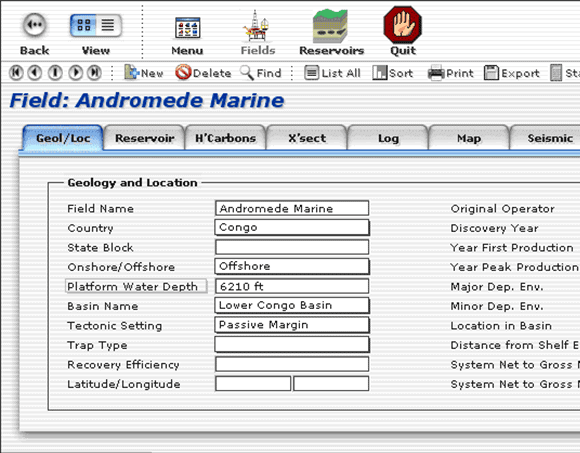
These screen shots display information on the Andromede Marine field. The original database interface is pictured above. Below, the updated, more modern interface can be seen.
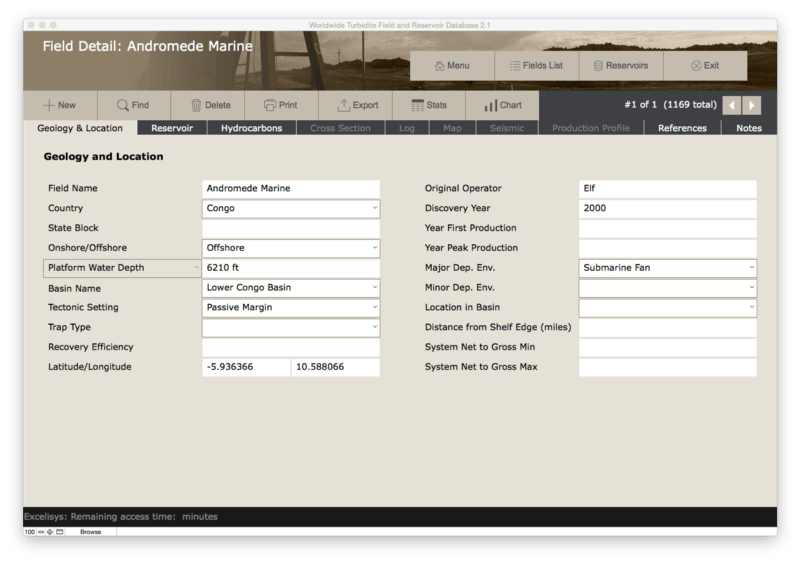
One of the most appealing new features of the custom FileMaker Pro database designed and developed by eXcelisys is the integration of PayPal. With the old subscription service, Cossey had to spend time sending out invoices and following up with accounting departments to get paid. This was often a laborious process — especially when foreign entities were involved. Now, users enter their credit card numbers directly into the system to buy access. To protect users, the transaction is SSL-encrypted and the site does not store any credit card information.
Other advancements with the new system include:
- Real-time data for users: With the old subscription service, Cossey updated the data in batches and sent out new DVDs every six months. This resulted in a data lag. For example, if Cossey unearthed new data three weeks after sending out a DVD, the new data would not get into the hands of subscribers until the next round of updates. Now, Cossey makes updates from his desktop and it goes live immediately.
- Robust charting: Bar graphs and scatterplots are integral in helping users visualize data distributions and make sense of data sets. Cossey’s old database used a FileMaker plug-in for charts. The new online system utilizes an API that allows zoom functionality and interactivity. When viewing a scatterplot, users can click on a data point and a small text box pops up to display the data values at the cursor location.
- Countdown clock: One distinctive feature the new system required was a way to track user time. Many websites offer subscription services. Often, a user buys access for a specific period of time — like 7 days, 30 days or 1 year. Cossey wanted to sell access by the minute. To accommodate this idiosyncrasy, eXcelisys developers added a timer to the website that runs quietly behind the scenes. A readout at the bottom of the screen shows a user how much time is left on the account and prompts the user to buy more time as the minutes tick down toward zero. Users can purchase time in 5, 10 or 20-hour blocks. The website logs a user out after 15 minutes of idle time and allows for subordinate users under one account.
Full Steam Ahead
Cossey, himself, is a unique specimen. He’s definitely not your average rock hound. Sure, he’s published academic papers on carbonate flow deposits and amalgamation in channel complexes, but he’s also self-published books on blurb, including a volume of poetry and another that deals with the intersection of geology and culture as it concerns the Chicontepec Basin of eastern Mexico.
Cossey grew up near Cambridge, England, and studied geology at the University of Wales in Swansea (now Swansea University). He attended graduate school at the University of South Carolina and completed field studies in Tunisia, earning his doctorate in 1978. During the 1980s, Cossey spent time in China, Indonesia and Dubai. He worked for ConocoPhillips, Sohio Petroleum, Standard Oil and BP. In 1995, Cossey left the corporate oil world to strike out on his own, and it was at this time that he began compiling his database.
While Cossey hopes the online database helps broaden his user base, he has other prospects in the works. In the fall, Cossey will lead a travel tour to Colombia. One highlight of the trip will be a ride aboard a 1921 Baldwin steam locomotive. “I have a passion for steam engines,” said Cossey, who bought the engine a few years ago and can’t wait to take it out. It’s been sitting in a shed in Bogota — idle — and unlike Cossey who is always on the move traveling and hiking and continually gathering new information for his website to provide users with the most comprehensive, up-to-date oil field and oil reservoir data available.
Read about other eXcelisys case studies, click here.
The post Geologist Fuels Consulting Biz by Drilling Deeper Into FileMaker Web Technology appeared first on eXcelisys.





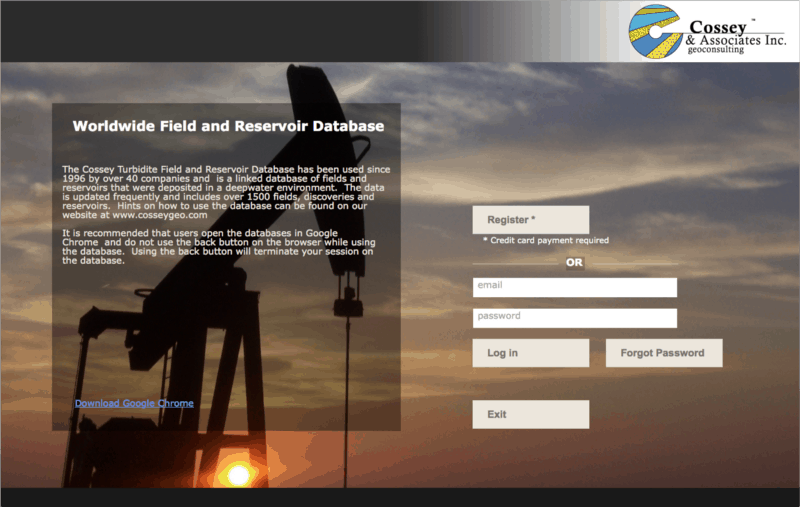
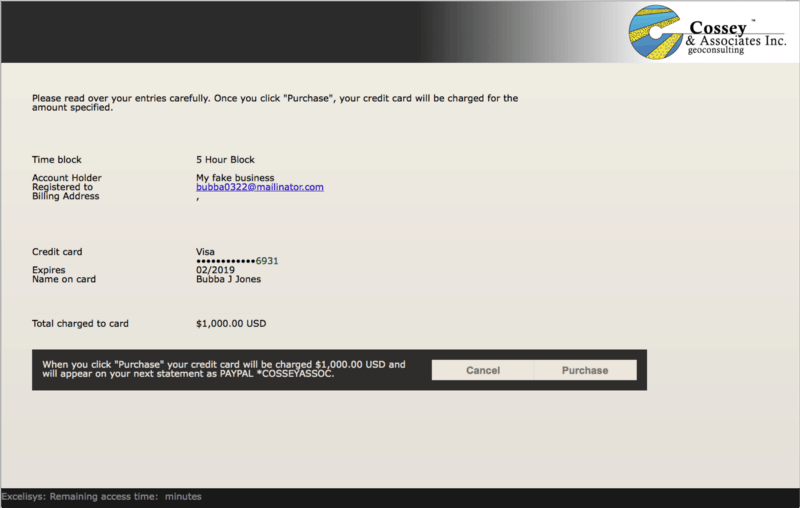
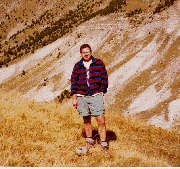
Recommended Comments